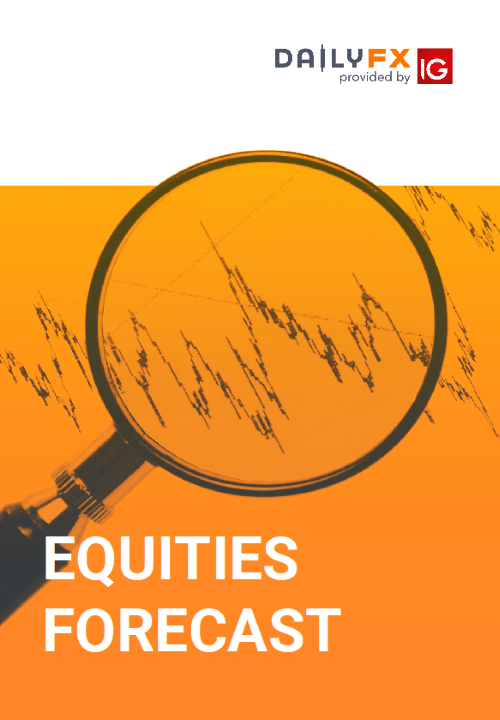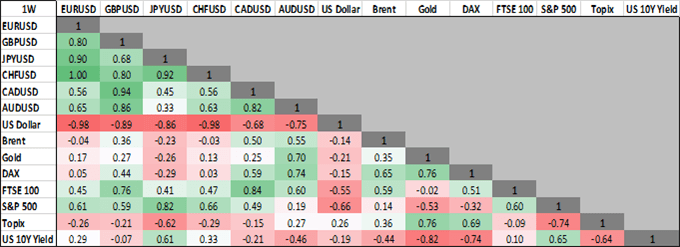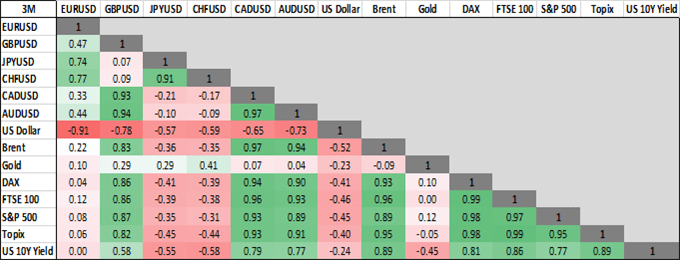US Dollar, GBP/USD, USD/JPY Price Analysis & News
- Cross-Asset Correlations Rising Sharply Amid Market Distress
- US Dollar the Ultimate Safe-Haven
- Japanese Yen Underperforming
Cross-Asset Correlations Rise Amid Market Distress
In recent weeks, with the spread over the coronavirus forcing countries into lockdown, the subsequent deterioration in risk appetite has prompted market participants to deleverage aggressively, which in turn has seen cross-asset correlations rise sharply. In this report, we explore correlations that look to be more extreme.

Recommended by Justin McQueen
Download our Equities Forecast
During times of significant distress in financial markets, cross-asset correlations tend to rise as idiosyncratic factors tend to become less important than the global macro environment. This had been evident last week as risk assets (US equities) posted its largest loss since the financial crisis, which in turn coincided with a rise in cross-asset correlations (figure 1). The negative correlation between the US Dollar and risk assets has risen, most notably, against the S&P 500, where the greenback has proved to be the only safe-haven in times of panic selling stemming from funding concerns with investors making a dash for cash. As such, a sizeable drawdown in equity markets could see the greenback remain elevated, while a rebound in risk appetite will likely to the US Dollar ease off.
| Change in | Longs | Shorts | OI |
| Daily | 2% | -2% | 0% |
| Weekly | 31% | 11% | 22% |
It is also worth noting that the Japanese Yen has seen an unusually high correlation to equities. While typically viewed as a safe-haven the Yen has weakened alongside stock markets. That said, we feel the underperformance in the Yen is largely attributed to the funding squeeze of dollars amid a notable widening in cross currency basis swaps, while dollar shortage concerns. Elsewhere, USD/JPY may continue to find support as we head to the Japanese fiscal year end.
There has also been a slight increase in positive correlation between the Pound and the S&P 500 as opposed to the Australian Dollar and Canadian Dollar. Therefore, raising the Pounds beta and making it more sensitive to swings in risk appetite. Factors behind this is the twin deficit that the UK has, most notably its large current account deficit, meaning that the UK needs constant inflow of foreign capital. As such, during times of market liquidation with investors fleeing to cash the Pound becomes particularly vulnerable,
How to Invest During a Recession: Investments & Strategy
Figure 1. Cross-Asset Correlation (1 Week, 1 Month & 3 Month Timeframe)
Source: Refinitiv, DailyFX. The Topix is used a proxy for the Nikkei 225.
— Written by Justin McQueen, Market Analyst
Follow Justin on Twitter @JMcQueenFX





Be the first to comment